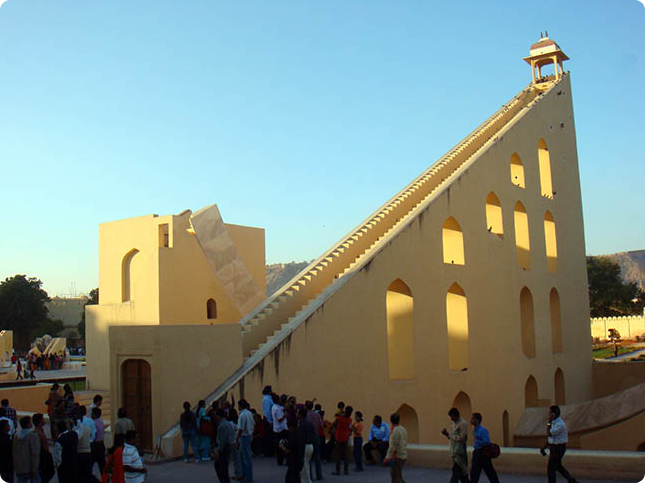Purpose of this portal

The Jantar Mantar Observatory at Jaipur, India: Brihat Samrat. Photograph © Department of Arts, Literature and Culture, Government of Rajastan
Set up originally to serve UNESCO’s Astronomy and World Heritage Initiative, the portal aims to open pathways for co-operation between, and the sharing of knowledge among, State Parties to the World Heritage Convention, the academic community, and other individuals and organizations with a strong interest in promoting and safeguarding the planet’s most precious astronomical heritage.
In particular, the portal aims to encourage State Parties to identify potential astronomical and scientific sites in their Tentative Lists and to support possible nominations to the World Heritage List (WHL) by
- summarizing the available documentation relating to astronomical heritage; and
- highlighting the potential of all regions to contribute to the WHL, especially in association with the global strategy for a ‘balanced, representative and credible List’.
It does NOT aim to identify Outstanding Universal Value (OUV) in individual sites, as this might compromise the process if the site in question were subsequently nominated for inscription on the WHL by UNESCO’s World Heritage Committee in consultation with its advisory bodies (ICOMOS for cultural values and the IUCN for natural values).
The portal builds upon work undertaken jointly by ICOMOS and the International Astronomical Union (IAU) through two Thematic Studies on the Heritage Sites of Astronomy and Archaeoastronomy (2010; 2017). Its development takes place in the context of the World Heritage upstream process for the recognition and study of astronomical heritage spanning all human societies across the ages.
Objectives
The portal sets out to provide:
- a broad range of information on tangible, intangible, cultural and natural global heritage relating to astronomy and the issues relating to the recognition and preservation of astronomical heritage, in a database searchable geographically and thematically;
- tools for the definition, identification and assessment of the significance, and potentially of the Outstanding Universal Value (OUV) of various types of astronomical heritage; and
- information on preparing WHL nomination dossiers for cultural properties related to astronomy.
We also hope to demonstrate ways in which the value of the sites might be analysed using the World Heritage criteria. Sites are inscribed on the List only if they are of OUV and have a broader significance than simply at the local, regional or national level. The evaluation process by the World Heritage Committee and its advisory bodies is based on the clear identification of the attributes that substantiate the OUV of the site.
This, we hope, will be useful to State Parties seeking guidance on the preparation of dossiers seeking to promote astronomical heritage sites to their ‘national tentative lists’ and, in the longer term, their inscription on to the WHL.
We also set out to aid the clear identification, conservation and assessment of the values of other heritage entities with national or regional value by using the same strict WH methodology.
Much of the information on the site will be publicly viewable, and it is hoped that this web portal will become ‘the’ vehicle for actively supporting, as well as sustaining political and public interest in, the promotion and protection of astronomical heritage sites (both cultural and natural).
Information on Preparing a nomination dossier is also available.
See also:
- Convention Concerning the Protection of the World Cultural and Natural Heritage (UNESCO, 1972)
- UNESCO’s Operational Guidelines for the Implementation of the World Heritage Convention, particularly para. 45 (definition of cultural heritage) and para. 77–78 (criteria for the inscription of properties on the UNESCO World Heritage List).

